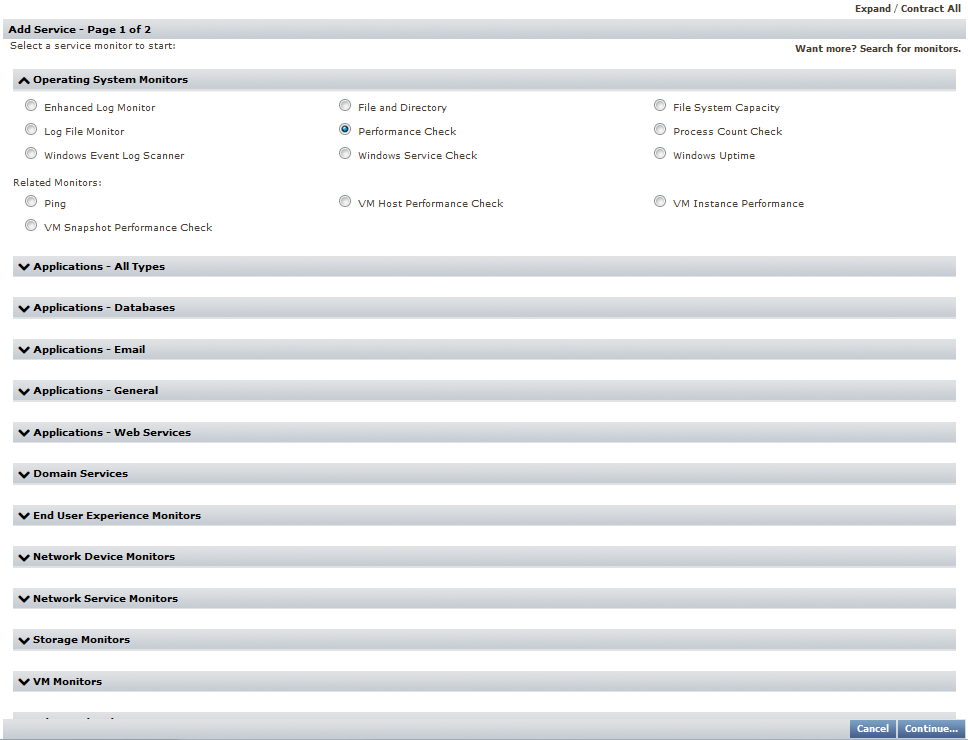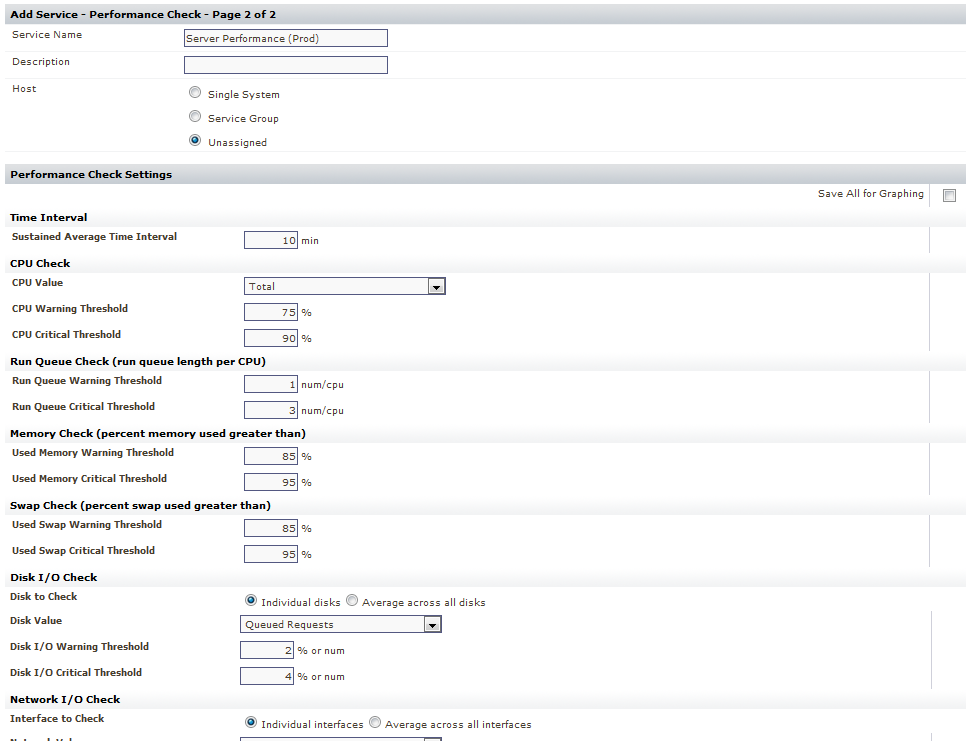...
- Click My Infrastructure to view the inventory you added in the first module:
- Click any Element's gear icon, then in the pop-up menu, click View to display its General Information page.
Since you have associated the Service Group to all Elements (by way of the My Infrastructure Element Group), the service monitor will be attacked to any Element. - In the left pane, click the Services tab to display any services attached to, and monitoring, this Element.
You can see that by creating a Service Group (pingable), and linking it to an Element Group to which this Element belongs (My Infrastructure), this Element now uses this service monitor. Some things to note using the above screenshot:- the pingTest service monitor has a (member) suffix to indicate it is "attached" to this Element via a Service Group, meaning the properties of this service monitor can only be edited at the Service Group level (it is possible to "detach" a service monitor to make it editable at an Element level, but this is not a best practice)
- the pingTest service monitor status may be shown as UNKNOWN because it has is recently been added, and a full monitoring interval has not yet passed
- to view how long a monitoring interval is for a particular Element, click its Info tab, then look in the Data Collection section of the General Information page
...
- Click Services, then click Add Service Monitor in the left pane
- In the Add Service Monitor pop-up, select the Performance Check service monitor, and click Continue.
- Provide a Service Name of
Server Performance (Prod), and leave it Unassigned (we are going to create a Service Group for it): - For the sake of the exercise, continue to configure the service monitor will some thresholds, similar to those shown above.
For this module and guide, we won't be making use of any performance checks you define, but feel free to experiment. You can always enter some unrealistically strict thresholds to force alerts, just to see how they appear on the dashboards. - Click Finish, then click Close Window.
Now that we have created a common performance check intended for all your production servers, let's do what we did in the first exercise of this module, and create a Service Group that will include it. - Click Services, then click Add Service Group in the left pane.
- in the Add Service Group pop-up window, confirm the group type is Regular, then click Continue.
- Configure the service group as follows:
- Provide a logical group name such as
Server Availability/Performance (Prod) - From the unassigned group of Available Services, add the Server Performance (Prod) service monitor you created earlier in this exercise.
- Select, from the Available Element Groups, the Production Element Group that you created in the last exercise.
- Ensure the include subgroups check box has been is selected.
- Provide a logical group name such as
- Click Finish, then click Close Window.
...
Once these Service Group and Element Group relationships have been are established, if you created more child Element Groups, the respective Elements they contain would inherit the appropriate service monitors. (For example, adding a "Solaris" Element Group as a child of the Production group, and sibling of the Linux and Windows groups means the Solaris servers will inherit all of the general health check service monitors; adding a "Databases" Element Group as a child of the Windows Servers group means the database servers will inherit all the Windows-specific health check monitors.)
...




